
Over the years, I’ve noticed many gardeners are a little unsure of how to use white in the garden.
Often overlooked, the color white frequently takes a back seat to all the showier colors out there, which is such a shame!
Though people may think of white as subdued, colorless, or ordinary – it’s actually incredibly versatile, serving many functions in the garden.
Is your garden too chaotic, boring, shady, or hot? Believe it or not, the color white can be the solution.
Let me introduce you to the amazing versatility of the color white.
1. Brighten a shady bed
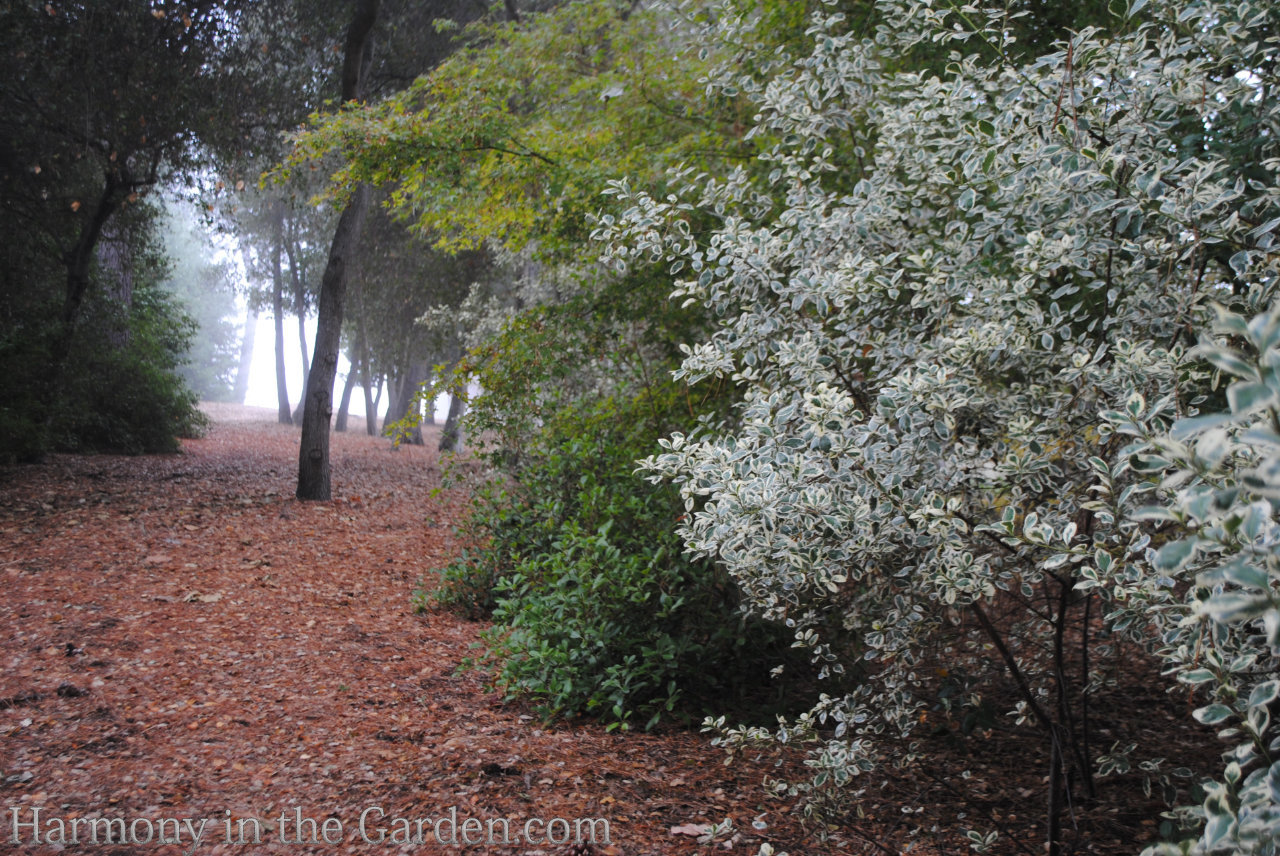
If you happen to have a shady garden, you’re probably all too familiar with the challenge of having it look bright and colorful versus dark and shadowy.
White (and sometimes yellow or chartreuse) is my go-to solution for adding that welcoming pop of color.
White also has reflective qualities, which helps to bounce the light around a bit.
To amplify this effect, choose white-flowering plants that also have big, shiny leaves that act as subtle hand mirrors, such as the calla lily or Bergenia.

Philadelphus is one of my favorite shrubs as its happy in both sun or partial shade.
The common name of philadelphus is ‘Mock Orange’ but be careful using that at the nursery, as there are several other plants that go by the same common name.
In a shady corner of my garden (left), the white flowers of the philadelphus light up the corner with blooms that last for several weeks.

In fact, if you look closely you can see there are several sources of white, coming not only from the flowers of the Philadelphus, but also from the blooms of neighboring Star Jasmine and Nandina.
Below are some of my other favorites for shady gardens:





2. Cool down a hot garden

Since moving to Granite Bay a few years ago, I’ve learned to rely on the color white for cooling down my hot garden.
Not literally, of course, but white creates the illusion of coolness – something I can definitely use during the summer months!
I’ll take anything that can make me forget about how blistering hot it is outside, even if it IS just an illusion!
Here are some of my favorites that I use throughout my garden:


I just love how the delicate white flowers of the ‘Hawkshead’ fuchsia give the illusion of cool drops of water.
Especially when combined with the antique water pump!
A funny story about that water pump – I gave it to my husband as a wedding gift.
It was a bit of a gamble, as I fully expected him to roll his eyes when I presented it to him, but to my delight, he loved it! (Proof I married the right man!)



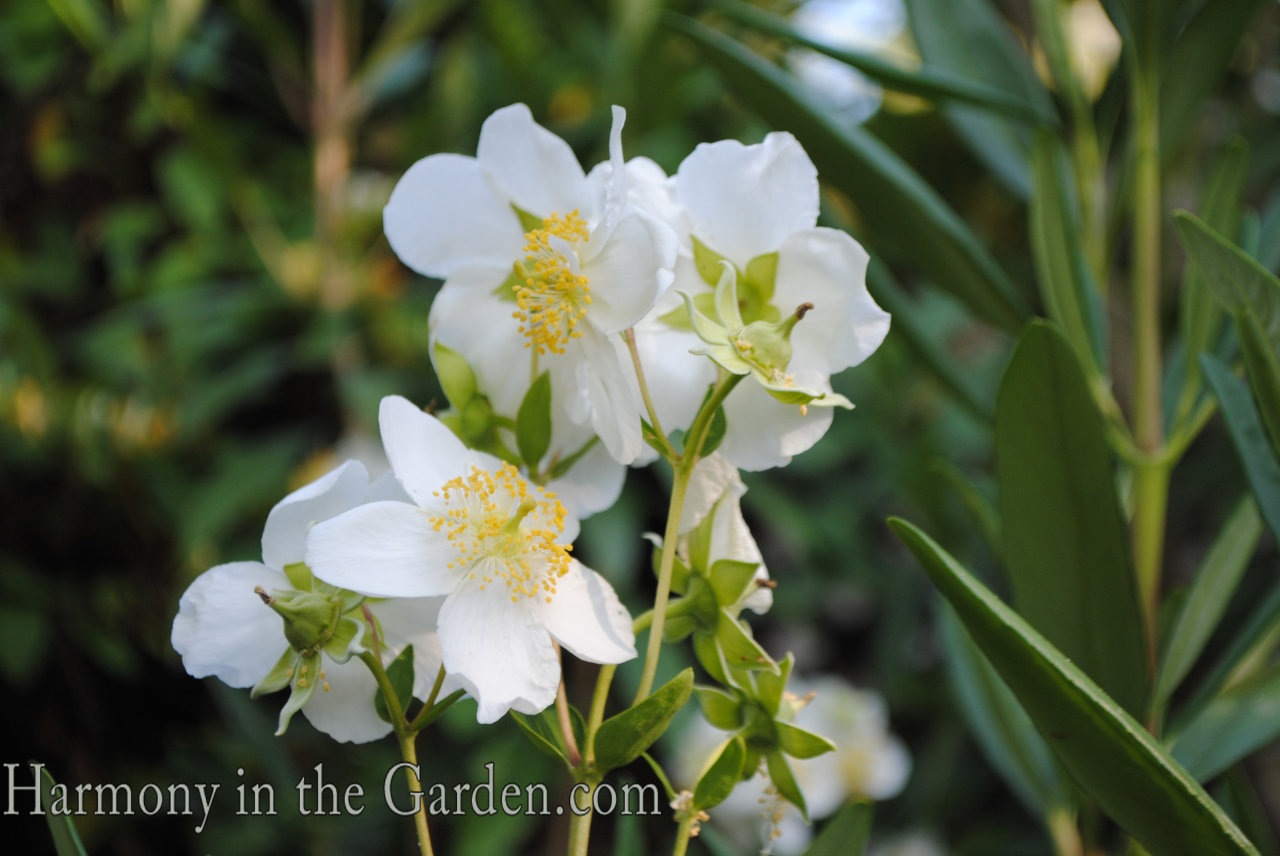


Here’s a tip: To prevent white flowers from visually fading away in the bright sun, surround them with darker colors.
For example, rhodanthemum’s white flowers (left) have an oversized dark maroon eye which helps the color stand up to the glaring sun.
Below, left, the frothy white flowers of the eupatorium ‘Chocolate’ stand out, thanks to the maroon foliage.
And the white agapanthus flower ‘pop’ when placed in front of the leaves of the hibiscus ‘Perfect Storm.’

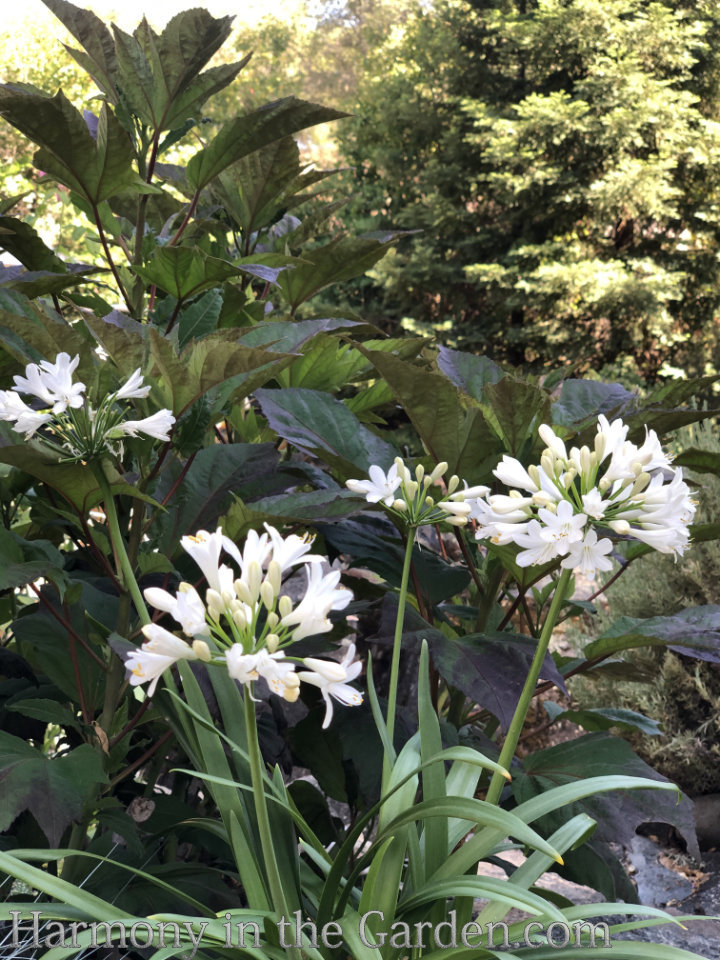
3. Break up the ‘Sea of Green‘ effect

When too many green shrubs are planted next to one another, the lack of contrast creates a ‘sea of green’ and can quickly look a little lackluster.
White flowers and foliage can add a welcome break to all this green.
The two photos (left and below) show just how powerful the color white can be in providing a powerful punch to the landscape.


In one area of my garden, I have a large hedge of photinia.
And, while it’s stunning when the new foliage emerges with shades of red, the leaves quickly turn to dark green, and stay that way throughout the rest of the year.
Thank heavens for the white flowers in spring, as they help break up this ‘sea of green’ (at least for six weeks or so.)

In this corner of my garden, despite the colorful flowers from the cestrum newlii, the variegated foliage and white flowers of the euphorbia ‘Glacier Blue’ steals the show.

A few years ago, I spoke at The Oregon Garden and was lucky enough to spend some time exploring this incredible place.
The variegated foliage of this salix ‘Hakuro Nishiki’ stole the show.
4. Add a touch of elegance to the garden

However, having designed gardens for others where the colors were restricted to green, white, and chartreuse, I’ve seen first-hand what a serene and elegant combination this can be.
Click here to see more of this garden’s transformation.

White can also help calm down an overly excited garden, one with too many colors happening all at once.
Acting as a unifying element, white gives the eye a place to rest before the next bright color jumps into the picture.
Below are some more of my favorites, sure to add a touch of elegance to any garden.






5. Create a Moon Garden with white flowers

Moon Gardens date back centuries, thought to originate in India and West Asia (before air conditioning) when events would take place outside, in the much-cooler air.
Designed to be best appreciated at night (under the light of the moon) white is a must-have color in a moon garden, with its ability to reflect and bounce light.
The white flowers glow in the moonlight, creating a magical effect.
And, if the flowers chosen have fragrance that’s released at night, better yet, as they’ll attract night-flying pollinators (like the sphynx month, below.)
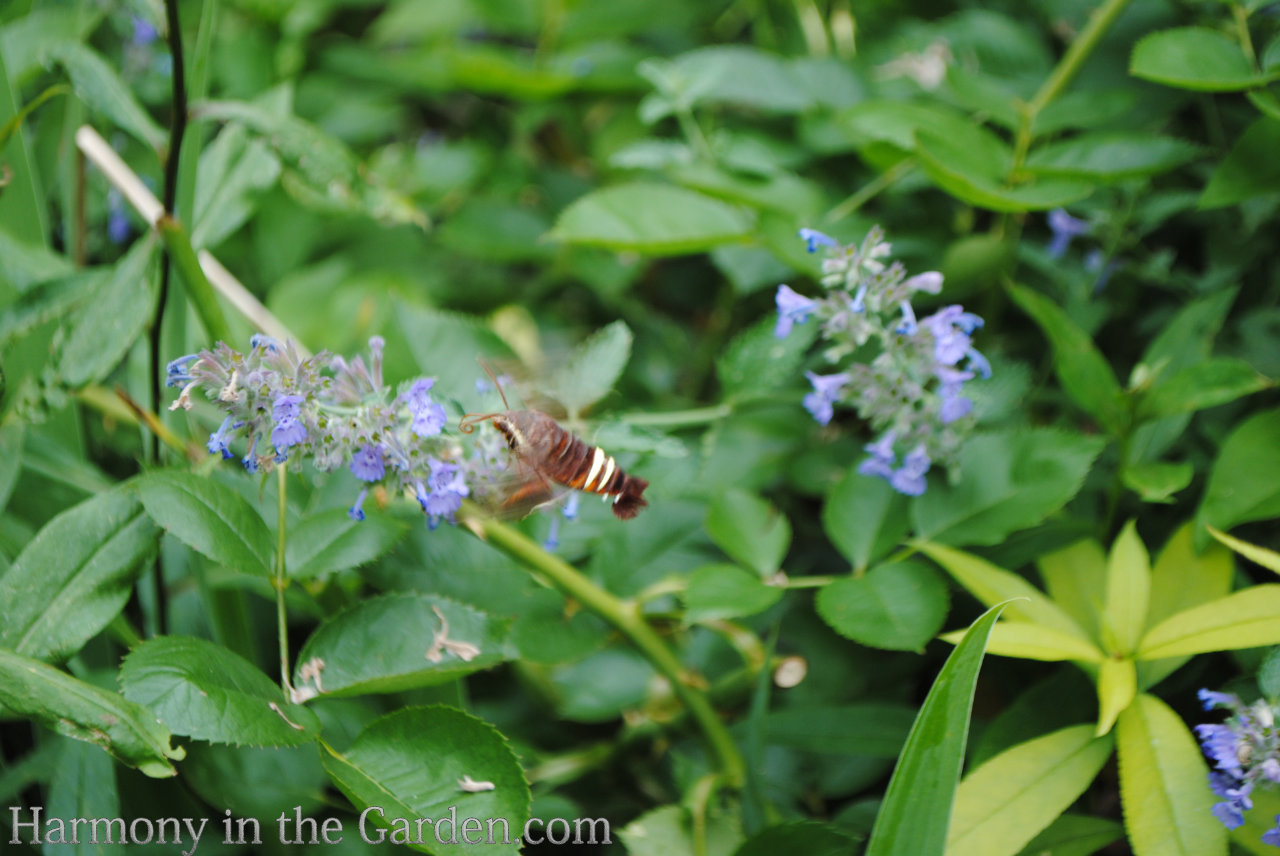
Any of the white flowers featured throughout this post would be at home in a Moon Garden.
And for a fantastic article about night gardens, including more plant lists, click here.
But for fragrance, take a look below for some of my favorites.

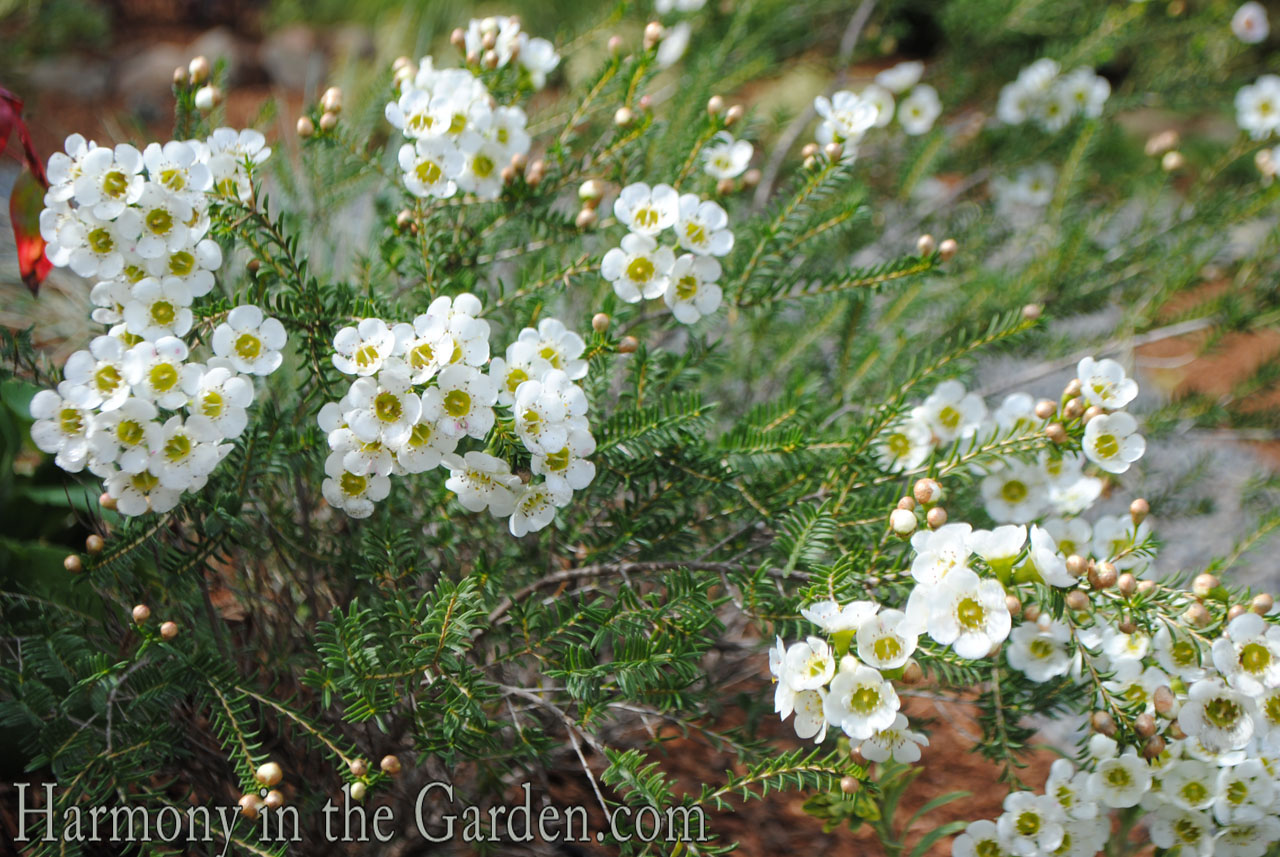
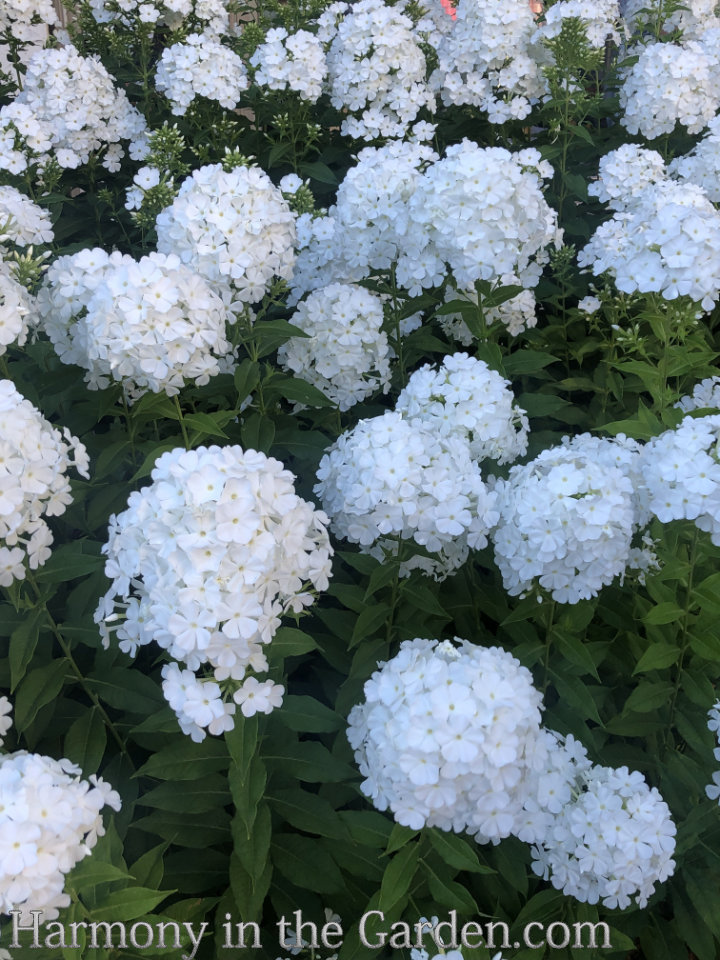
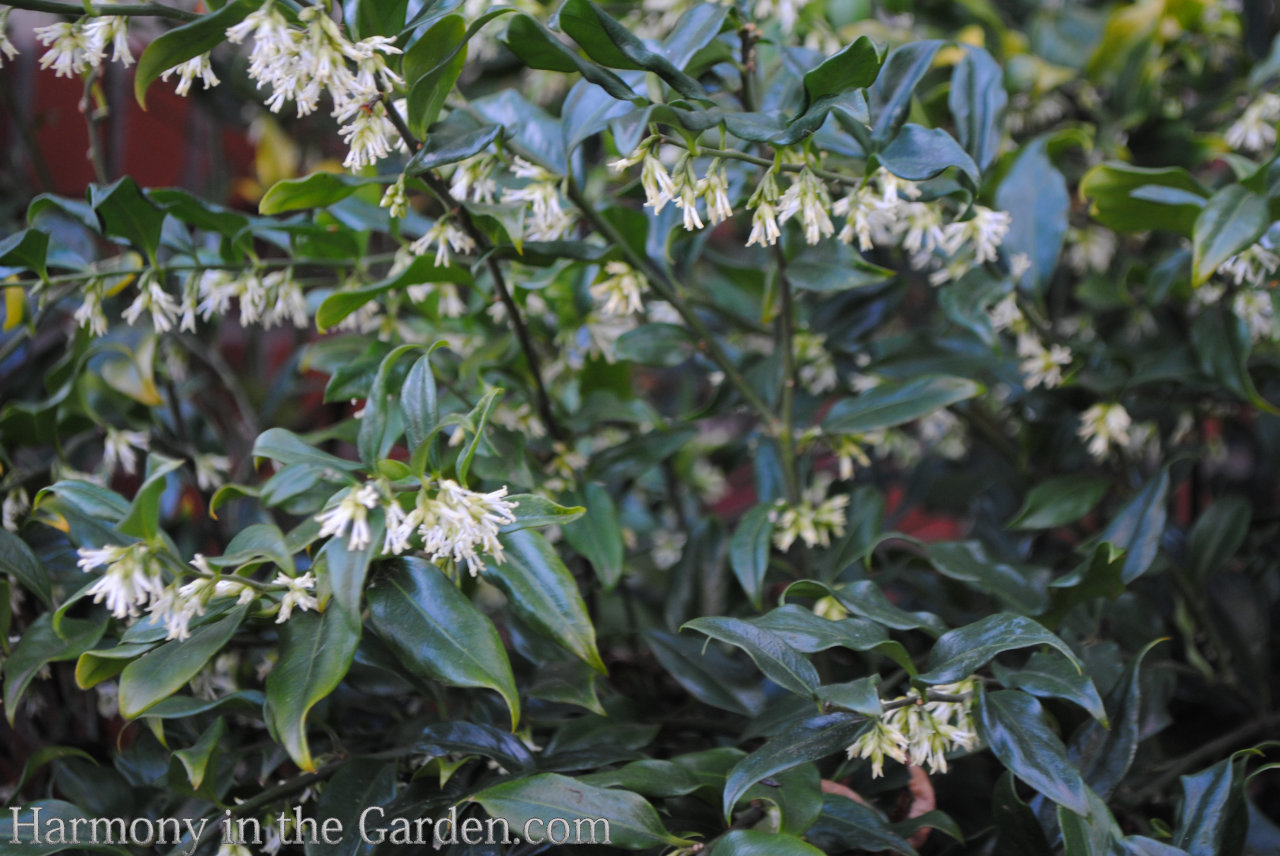

6. Create an All-White garden

Creating a monochromatic garden (whether using white or any other color) isn’t for the faint of heart.
If each plant isn’t carefully chosen for its qualities other than color, it’s easy to end up with a lackluster garden without definition.
Contrasting textures, shapes, and forms is KEY to having a successful monochromatic garden.

For example, if I were creating an all-white garden, a contrasting combination might include the oversized petals of the romneya (Matilija Poppy, left) placed near the tiny flowers of a feverfew, below.


You get the idea – it’s all about contrast!
Here are some others with fantastic shapes that would be right at home in any all-white garden:







7. Unusual sources of white

Flowers are an excellent source for adding white to the garden.
However, don’t forget about the other elements of plants, also.
Things such as seed-heads, berries, grass inflorescence, and even bark are all excellent choices for adding a surprise pop of white to the garden.






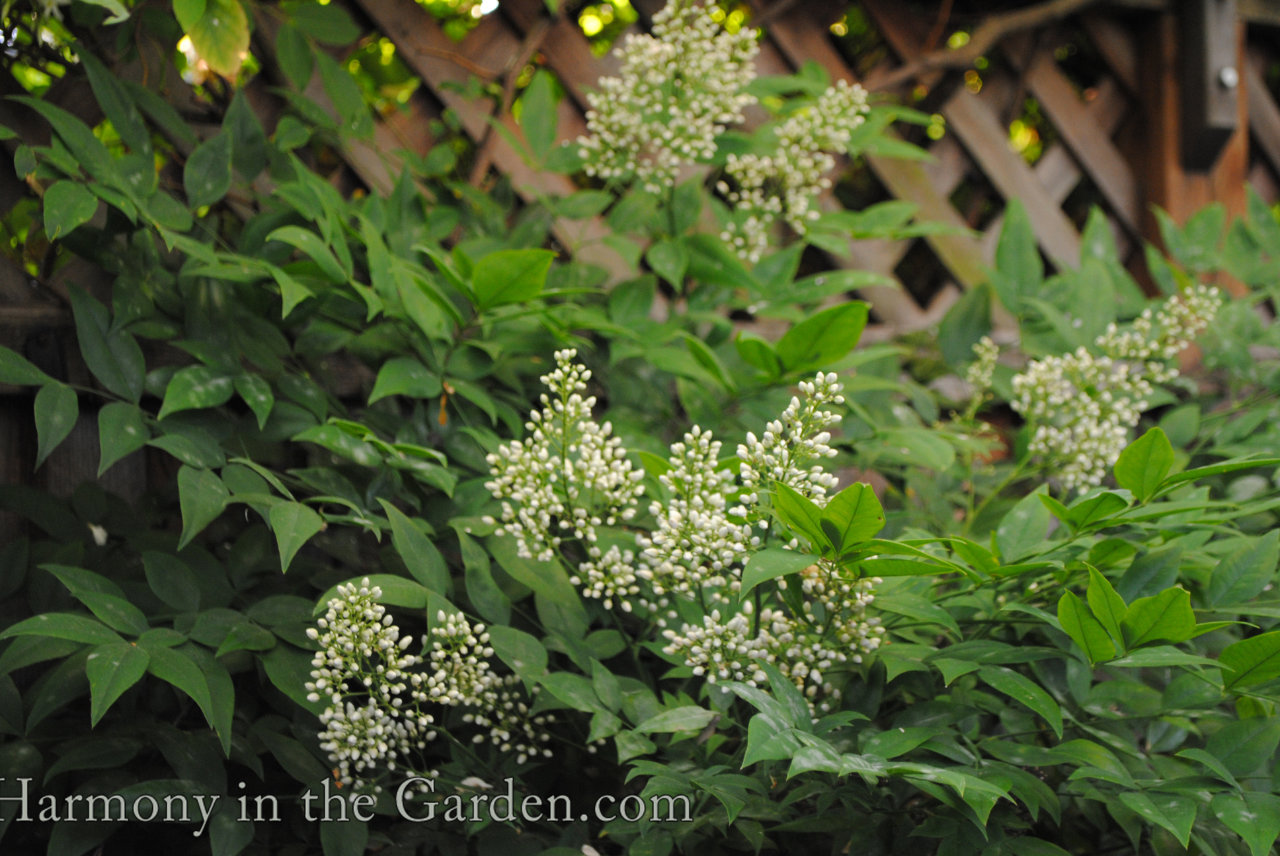



As you can tell by the length of this post, white is a very versatile color in the garden.
Of course, I couldn’t mention every white flower (though, I tried!) so are there any favorites that you’d like to recommend?
Do you have your own strategies for using white in your garden?
If so, please share with us!
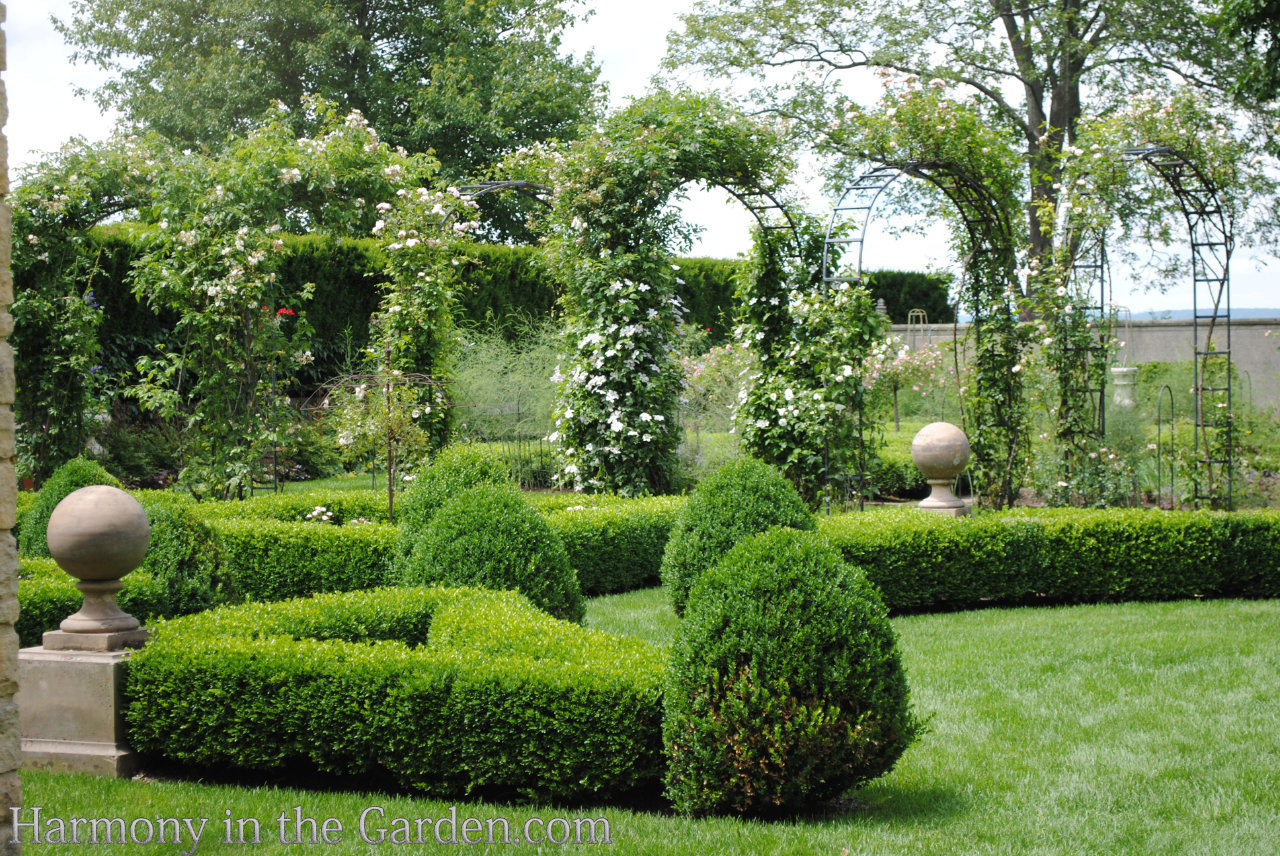






13 Comments
Fabulous read! I love white in the garden and am always interested in seeing how other folks use white in their gardens and what plants they choose. I have a lot of new plants to check out now. Thanks Rebecca, for yet another enjoyable blog post.
Thank you, Vivian, I’m so glad you enjoyed my article! Hoping to visit your beautiful garden this spring! 🙂
Wow! Lovely presentation of a white garden.
You make it easy to understand.
Happy New Year
Happy New Year to you, too, Kathy – nice to hear from you and I hope you’re doing well! 🙂
Dear Rebecca,
A friend sent me your Harmony in the Garden about using white in the garden, a few days ago. I would love to be on your mailing list.
Thank you
Hi Camille, and welcome to my blog! I just added you to my mailing list and hope you enjoy my articles. Happy Gardening!
Beautiful post Rebecca, thank you. Everything you discussed about white in the garden works in a painting as well–white calms a painting with too much color, white pops when surrounded by darks, white can be cool or warm and used in a monochromatic way, limited color palettes can be elegant and serene. You are a master painter of gardens and I learn so much from you. Keep on creating, thank you!
Hi Gigi, wow – what a compliment, thanks!!! I often tell my clients the main reason I hand-draw my designs is so I can move slowly and think about which plant goes with which….painting with plants. Leave it to YOU, an artist, to figure that out! I’m looking at my little painting that you painted (‘Eagle Harbor View’) as I type this and notice the little white boat in the distance, surrounded by moodier blues. Perfect timing! Sending you lots of love, my friend! xo
Another great article! I look forward to them each month. I live in Nevada County and I want to plant a couple of groupings of 5-6 evergreen grasses in contrasting colors. I prefer plants that don’t grow over 2 feet and that deer tend to avoid. Would you mind suggesting some grasses for me? Are there any nurseries in the Nevada/Placer/Sacramento Counties area with a wide variety of grass selections?
Thanks.
Thank you, Bill, I’m glad you enjoyed it. Evergreen grasses that stay under 2′ are sort of the holy grail, aren’t they? Sunset Plants is currently releasing a lomandra that grows under 2′ (and actually STAYS under 2′, as many claim to do so, but grow larger.) Green Acres carries some of their plant collection so I’m hoping to see the lomandra there this summer. I love lomandra ‘Lime Tuff’ and ‘Del Sol’ (they both say they grow 2’x2′, but it’s more like 2.5×2.5) as well as many carex varieties (for the shade.) I love carex ‘everillo’ in particular with its lime green foliage. The deer don’t ever bother mine and I’ve had them front and center for several years – the deer just pass them by. Liriope, too, even though they’re not a grass? But they look like a grass and deer leave them alone. Our native carex divulsa (aka: Berkeley Sedge) stays smaller – I prune mine by 2/3 once a year to encourage fresh new foliage. As for nurseries, it seems Green Acres is dominating the game and have the largest grass selection that I’ve seen. I was just at High Hand and didn’t see much there yet – same with Bushnells. Let me know what you come up with!
Thanks, Rebecca. Great suggestions. I’m going to head for Green Acres.
You’re welcome. You may have read this blog post I wrote about designing with grasses, but in case you haven’t there’s a lot more that I’ve used over the years that may inspire you. https://harmonyinthegarden.com/designing-with-ornamental-grasses/